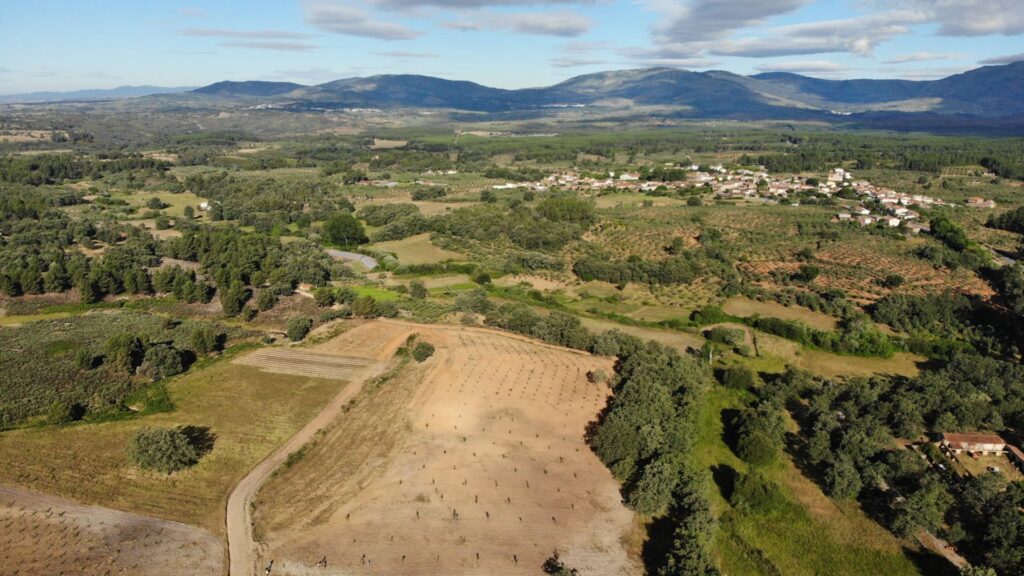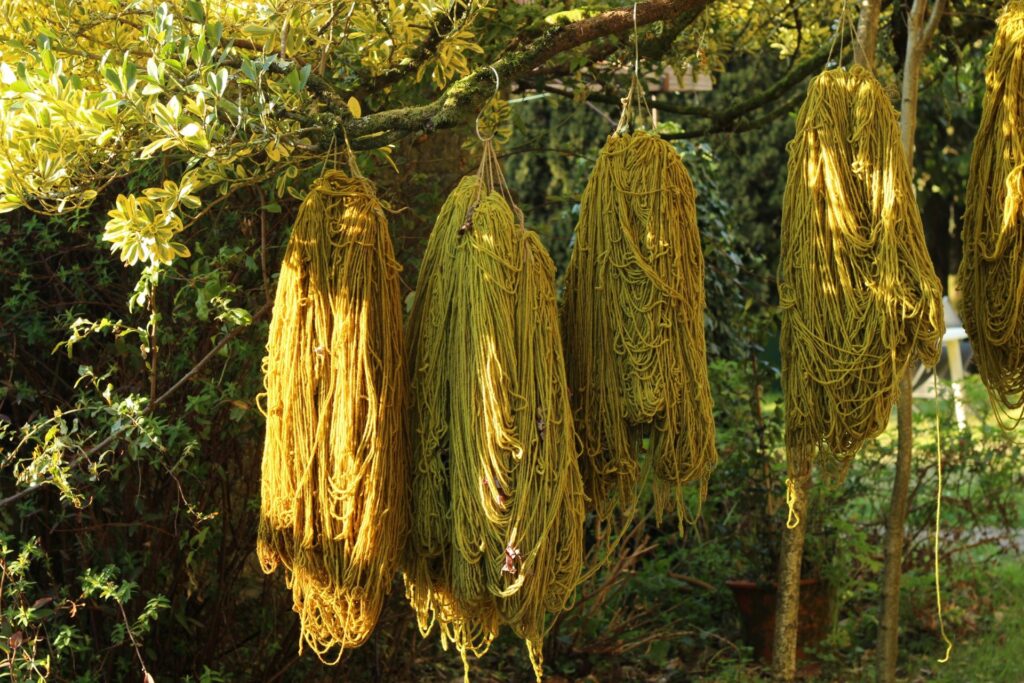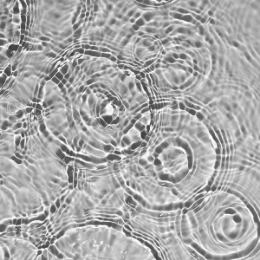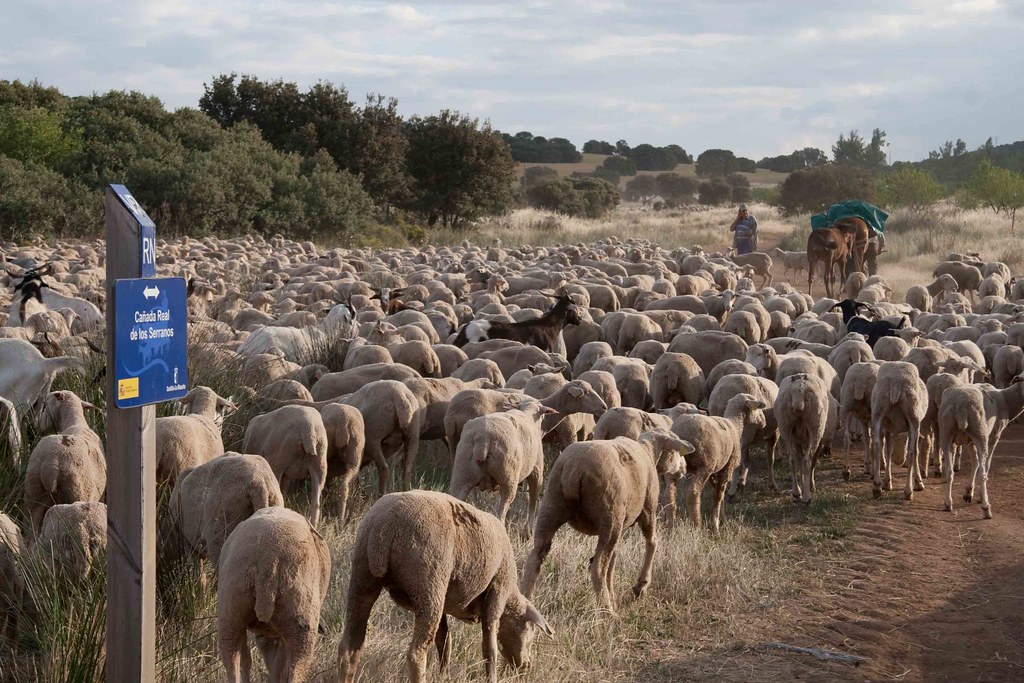Spain’s rich history of transhumance offers insights into the preservation of cultural heritage and combat to wildfires.
Rural depopulation and the loss of traditional practices like transhumance have altered ecosystem services in rural Spain. These changes have contributed to making rural landscapes more vulnerable to wildfires, invasive species, and biocultural diversity loss. Some projects across Spain and Europe are working to address these issues by once again valuing rural cultural heritage and resources, and by bridging the gap left behind by the rural exodus.
Transhumance has traditionally involved the grazing of animals in natural landscapes and diverse ecosystems, including forests, grasslands, and wetlands. Over centuries, the animals’ grazing activity has become an important part of the natural cycle of these ecosystems and in Spain, each transhumant sheep translocates around 5,000 seeds daily and fertilizes the land with more than 3 kilos of manure, according to the Fundación Trashumancia y Naturaleza (Transhumance and Nature Foundation).
Transhumance has a deep-rooted history in Spain and the wider Mediterranean region. This form of pastoralism involved driving livestock along well-trodden routes between distinct geographical and climatic regions with the changing seasons. Spain’s drove roads, which are legally protected, extend 125,000 kilometers in length and cover 1% of the country’s territory. The scale of this network underlines its patrimonial value of the practice in the Iberian Peninsula, as does the fact that UNESCO included transhumance on its Representative List of the Intangible Cultural Heritage of Humanity in 2019.
Transhumance has a deep-rooted history in Spain and the wider Mediterranean region.
Towards the end of the 20th century, there were an estimated 1.3 million transhumant sheep, however, the most recent survey conducted in 2011 documented 270,000 transhumant sheep, with merely 10% of them engaging in on-foot pasture migration. The gradual abandonment of the practice has resulted in a decline in the grazing pressure on ecosystems, which has led to a loss of biodiversity and an increase in the risk of wildfires.
Empty Spain
While the decline in transhumance can be linked to several phenomena, rural depopulation and land use changes have had a clear impact. Spain accounts for three out of the five southern sparsely populated areas (SSPA) identified by the European Commission. But those three regions are just the tip of the iceberg of a rural exodus towards urban centers that has been taking place continuously since the middle of the last century.
In European terms, Spain is a sparsely populated country. When comparing its population density with that of other major European countries, Spain’s 93 inhabitants per square kilometer is significantly lower than France’s 119, Italy’s 206, Germany’s 240, or the United Kingdom’s 279.
In European terms, Spain is a sparsely populated country.
According to a report from the Spanish socio-economic think-tank Funcas, an area that could be termed “depopulated Spain” would comprise 23 Spanish provinces that jointly meet the following two criteria: having a negative demographic growth rate between 1950 and 2019 and, in the last year, having a population density lower than the national average.
Two of those 23 provinces are found in the region of Extremadura. There, the University of Extremadura and the regional government are working within the EU-funded project RESIST to tackle climate change impacts by boosting the primary sector in the region and revitalizing the rural economy. “In Extremadura, over the past three or four decades, the population engaged in agriculture has decreased by half,” explains Fernando Javier Pulido Diaz, Professor of Biology at the University of Extremadura.

How fires fill the void
The southwest Spanish region is grappling with the multiple side-effects of depopulation, such as decreasing economic clout and a dwindling job market. However, Extremadura faces a greater challenge exacerbated by climate change and linked to depopulation: wildfires.
So far this year, an estimated 85,134 hectares of Spanish land have been burned by fire, according to data shared by the European Forest Fire Information System (EFFIS), which is above the average annual trend of 81,059 recorded between 2006-2022.
Between 17 and 20 of May, 2023, the municipality of Pinofranqueado, in the province of Cáceres at the north of Extremadura registered one of the most severe forest fires of the year. The wildfire scorched 10,843 hectares of land in the area where the RESIST Project is active. Climate change is aggravating the effects of depopulation with drought and rising temperatures. But “in essence, the fires are the lamentation of that depopulated area,” says Pulido.
Extremadura faces a greater challenge exacerbated by climate change and linked to depopulation: wildfires.
for almost everything. The population that is lost includes those who used to work in agriculture. Consequently, there are no longer people available to perform the work of forest cleaning.”
Extremadura plans to recover the traditional mosaic pattern land management system to tackle the landscape degradation challenge that it is facing due to population loss and fire damage. The idea is to create a fire-smart landscape (FSL), that are territories in which cost-effective actions for fire prevention are designed through social engagement and multi-actor cooperation, including both local communities and official fire suppression bodies.
The mosaic system focuses on creating productive firebreaks. These do not necessarily have to be in a strategic area — any fuel removal from the forest in a high fire risk area would create a mosaic landscape. However, under the RESIST Project, the partners in Extremadura will focus on designated high-fire-risk areas, where they will identify key stakeholders to ally with in a bid to ensure landscape transformations within one year. “This will lead to a purposeful transformation of the landscape, turning prevention into an economic, social, and productive opportunity,” notes Pulido.
The activities that Pulido and his team will carry out within the RESIST Project until 2028 build on the MOSAICO Project that was developed between 2017-21. Within that project, they managed to create around 100 productive firebreaks but some of such firebreaks’ effectiveness due to their smaller size and insufficient strategic placement, something Pulido hopes to improve with RESIST.
“In RESIST, we are exclusively focusing on larger areas and working with collectives, not individual actors, to ensure long-term persistence,” Pulido explains, highlighting the lessons learned from previous experiences.
In RESIST, we are exclusively focusing on larger areas and working with collectives, not individual actors, to ensure long-term persistence.
Bureaucratic obstacles also contribute to the risk of fires, such as “an agricultural or livestock operation that isn’t very profitable and encounters bureaucratic hurdles,” says Pulido, adding that “we cannot combat fires solely by extinguishing the flames. What we should be doing is facilitating all activities in the primary sector that can help prevent fires.”
“The helicopter era is over,” he says, summarizing the Statement on the Management of Large Forest Fires in Spain released by the Pau Costa Foundation in June 2023.
The statement, endorsed by a long list of public and private institutions, research centers, NGOs, and citizens, underlines as one of its 15 points that “it is essential to promote a vibrant rural world with an environmentally sustainable primary sector, encouraging the consumption of local products and the valorization of forest products (both timber and non-timber).”

Finding solutions to revitalize rural communities
One way of revitalizing rural communities is by bridging the gap between urban and rural environments, bringing together farmers, livestock breeders, craftspeople, and cultural heritage. Materia Botanica is a collaborative textile project exploring the use of reclaimed agricultural plant residue as a source of natural dye for clothing.
The project’s ethos was born out of the need to address the environmental impacts generated by the fast fashion trends that have come to dominate modern society. At its core is a belief in a circular economic approach that extracts value from waste products to produce a garment that comes out of the ground and can return to it without causing damage.
At its core is a belief in a circular economic approach that extracts value from waste products to produce a garment that comes out of the ground and can return to it without causing damage.
These natural dyes offer the opportunity to create garments free from harmful substances while also promoting the revival of a traditional craft and moving away from fast, standardized, and industrial processes and reconnecting with the essence of time and materiality in nature. Materia Botanica founder and textile designer Almudena Cerezo says close cooperation with field workers, agriculture, and plants “brings us closer to the rhythm of nature. For example, there are no pomegranates all year round, so the colors that dye our jerseys, like vegetables, are seasonal.”
Almudena has been investigating the potential of different plants, fruits, shells, and other leftovers that farmers provide for her study, as part of a project funded by ENI CBC. During her research, she established connections with local farmers and food industry businesses across the Iberian Peninsula, creating a network of collaborators who provided her with raw materials.
One of Materia Botanica’s key collaborators has been the Almendrehesa regenerative agriculture society, whose members specialize in almond trees and the cultivation of other nuts such as pistachio and walnut.
Created in 2016 by 20 farmers working in the semi-arid region of southeastern Spain encompassing the provinces of Granada, Almería and Murcia, Almendrehesa advocates for climate-smart and environmentally beneficial forms of farming. Its ethos is based on the Commonland Foundation’s philosophy of the four returns, which aims to have not only the return of the natural capital of benefit of the environment but also that of social, financial, and inspirational capital.
“We do not only intend to improve the environment but also to improve the living conditions of the people who live in the territory and provide them with sufficient profitability and avoid the depopulation of the rural world,” says Pablo Garcia, CEO of Almendrehesa.

Putting value to by-products
In its first line of products, Materia Botanica used pomegranate peel, avocado pits, chestnut urchins, almond shells, and onion peel to create dyes that were applied using artisanal techniques along with mineral fixatives to ensure the durability of the color and quality of the clothing. By harnessing these raw materials, Materia Botanica elevates and valorizes a byproduct that would typically have been discarded, burned, or undervalued and creates opportunities that could benefit the local farmers’ economy.
Materia Botanica, like Almendrehesa, RESIST and many other projects out there, are working to regenerate a territory threatened by depopulation, climate change, desertification, erosion, and loss of biodiversity.
The wool to create the garments for this project has also been carefully selected. Almudena sought out native merino wool from extensive livestock farming found in the ‘dehesas’ of Extremadura, where a traditional holistic system integrates free-range livestock farming, forestry, and agriculture with natural wild ecosystems. Extensive livestock farming also promotes traditions such as native breeds, transhumance, and animal welfare.
In recent decades, the use of wool has lost its place in the Spanish market. As Almudena explains, exploiting wool has become a challenge for farmers and shepherds, who sometimes view it as waste as they cannot provide the quantities demanded by industrial-scale wool washers. As a result, it is common to find large bonfires in rural areas where wool is burned.
Materia Botanica, like Almendrehesa, RESIST and many other projects out there, are working to regenerate a territory threatened by depopulation, climate change, desertification, erosion, and loss of biodiversity. They are also reclaiming the relevance of our cultural heritage like transhumance, connecting us to nature and the landscapes.
However, in many cases, they are still small-scale projects searching for economic and institutional support to maximize their impact in the territories. Materia Botanica, for example, is searching for funds through a crowdfunding campaign. Others like RESIST are facing and trying to overcome and change, when possible, bureaucratic obstacles.
The article was first published in REVOLVE.












